20 Accessible Home Modifications for People With Disabilities
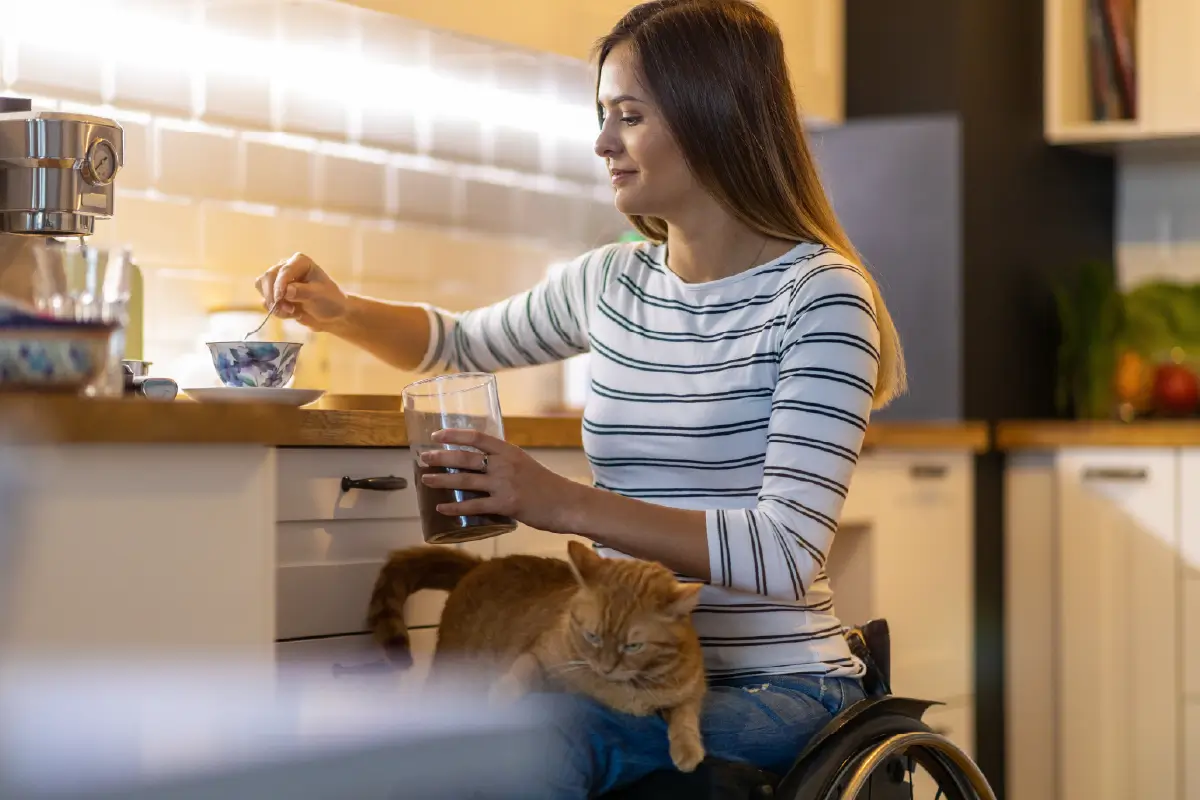
|
Quick answer: Accessible home modifications can make your home easier to navigate and less risky for individuals with disabilities. Common modifications include installing an entryway ramp, a stair lift, raised-height toilets, non-slip flooring, and bathroom grab bars. |
Accessible home modifications can help make your home easier for individuals with disabilities to navigate. Typical household layouts can be challenging for those with limited mobility—some design options can even prove to be dangerous.
We'll walk you through 20 accessible home modifications you can make, including eight cost-effective possibilities. If you could benefit from financial assistance while making accessibility changes, we'll highlight several grants you can utilize for home modifications.
12 Accessible Home Modifications
Where should you start with accessible home modifications? We've listed 12 modifications you can make around your house or apartment to improve accessibility for persons with disabilities. Modifications also allow older adults to age in place with greater ease.
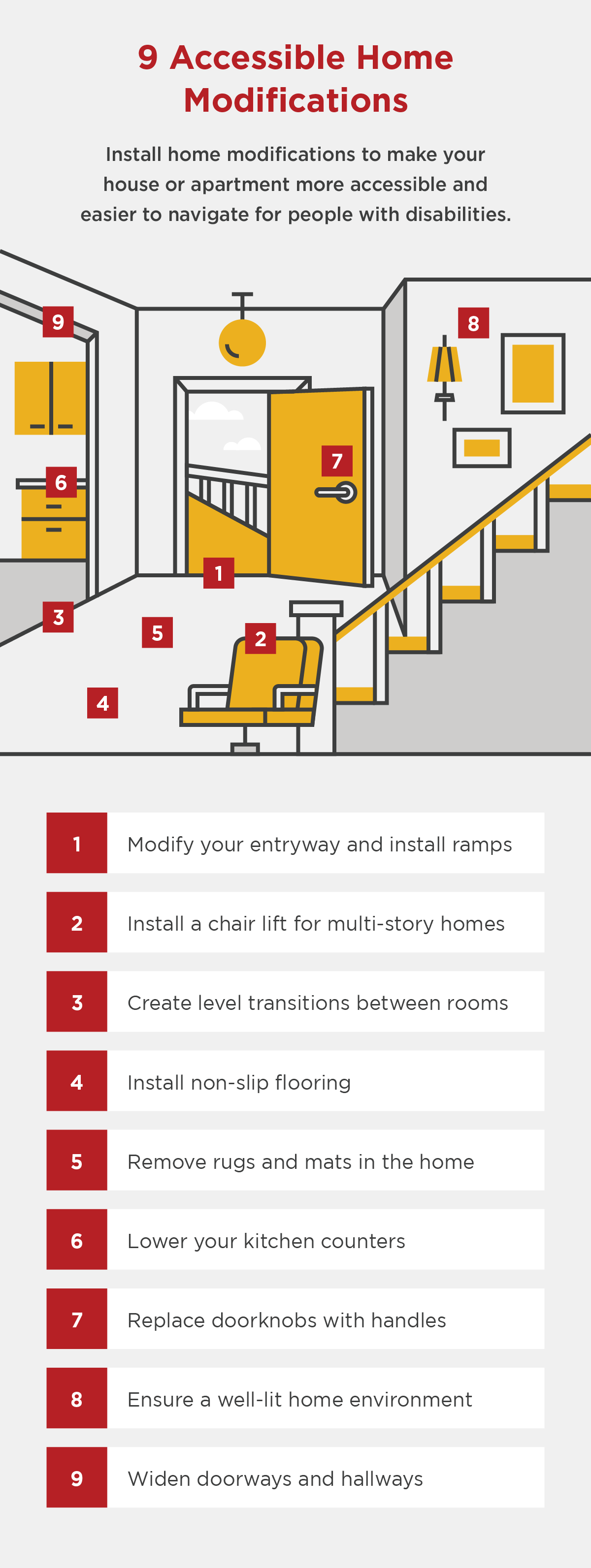
Modify your entryway and install ramps
Getting into a home can be a prominent concern for individuals with limited mobility, particularly wheelchair users. Consider installing a wheelchair ramp leading up to your home's entryway. A larger entrance can also make it easier for wheelchair users to clear the doorway.
Install a stair lift for multi-story homes
Moving up and down stairs can be challenging for individuals with a mobility impairment. Common conditions, such as arthritis, can even make the process painful. Consider installing a stair lift to help individuals with limited mobility move between different floors in your home.
Install raised-height toilets in bathrooms
Installing a raised-height toilet in your bathroom can make it easier for those with knee or back pain to use the washroom. Also known as comfort height toilets, these toilets help you avoid the discomfort of squatting. However, raised-height toilets can be tricky for kids.
Install non-slip flooring in the home
Individuals with limited mobility may also have balance issues. Installing non-slip flooring (sometimes called anti-slip flooring) in your home helps prevent distressing falls. Some non-slip flooring options include cork and low-pile carpet.
Install grab bars in showers and tubs
Most accidents in the home occur in the bathroom, a room that can be notoriously slippery due to water. Installing grab bars in your shower or bathtub gives those with and without mobility concerns more stability when bathing.
Install a walk-in or roll-in bathtub
Getting into or out of a bathtub can be demanding for individuals with limited mobility. Opting for a walk-in tub with a door negates the need to lift and balance on a single leg while stepping inside. Roll-in bathtubs are also available, featuring wider entrances that wheelchair users can enter. Due to their complexity, we recommend hiring a bathroom service professional to install a walk-in or roll-in bathtub properly.
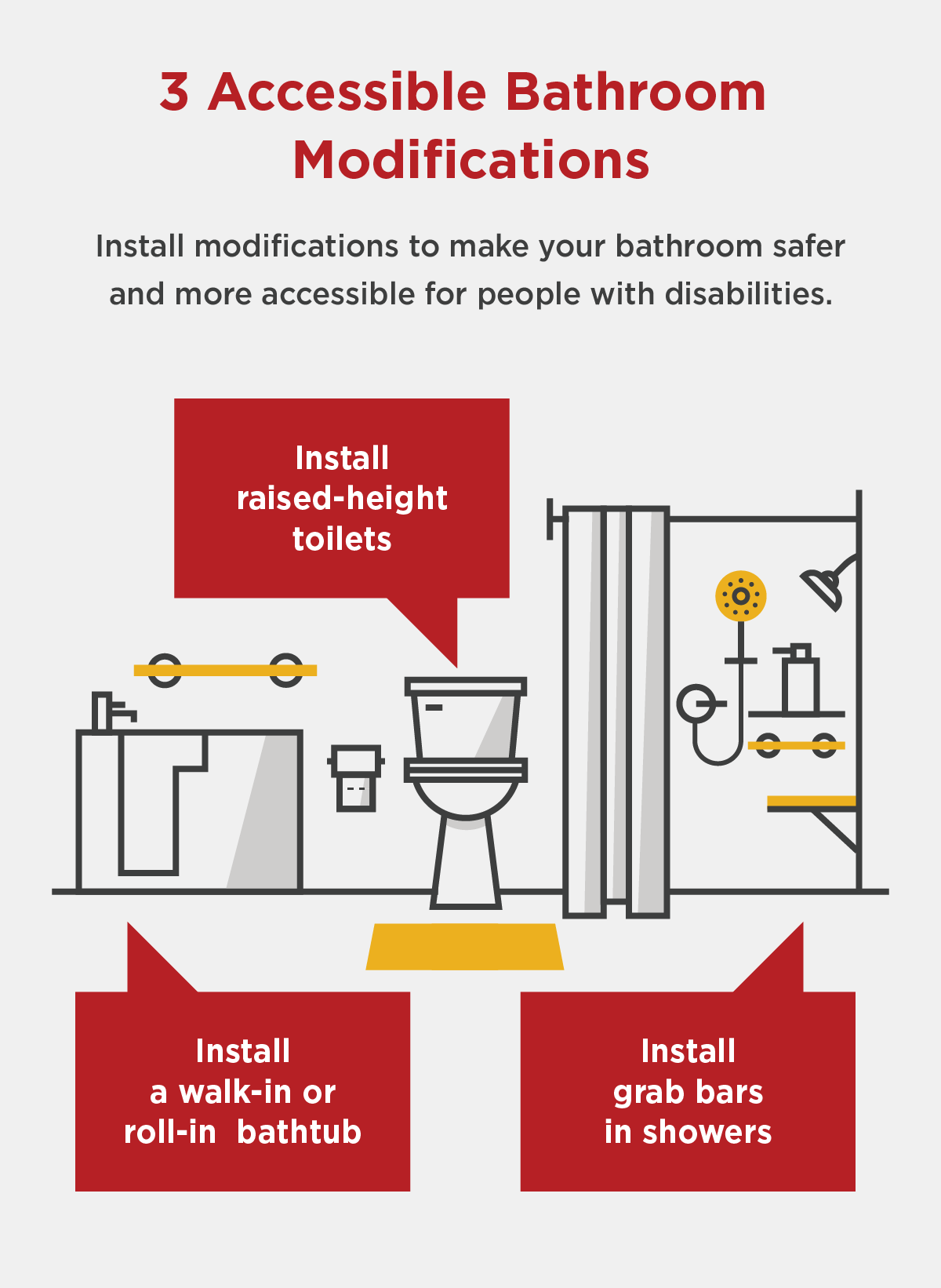
Replace door knobs with handles
Traditional doorknobs can be difficult for some individuals to grip and turn. A more accessible alternative is a lever-style handle, which can be installed on most doors without issue. For doors with a traditional doorknob that can't be modified, an accessibility grip may be a possibility.
Ensure a well-lit home environment
A poorly lit home can be treacherous, especially for individuals with visual impairments. Ensure your home is well-lit, and be sure not to neglect areas with changes in elevation, such as stairways. If needed, you can hire a lighting services professional to add additional lighting to darker areas.
Widen doorways and hallways
Traditional doorways and hallways can be challenging for individuals with mobility impairments to navigate. In particular, wheelchair users may not fit through narrower spaces, preventing required access. Consider widening doorways and hallways to at least 32 inches to increase accessibility.
Remove rugs and mats
If not correctly stabilized, area rugs can be dangerous for individuals with limited mobility. We recommend removing rugs and mats, such as those in the bathroom when making your home more accessible. You can also use non-slip tape to prevent accidental slips if you don’t want to remove them.
Lower the placement of kitchen counters
Kitchen counters and other raised surfaces can be demanding for some individuals to access due to their height. Wheelchair users may have a more difficult time accessing the counter due to their lower positioning, while others may have trouble lifting their arms. Hiring a kitchen handyman to install cabinetry around 29 inches tall is one way to make the kitchen more accessible.
Create level transitions between rooms
Tripping can be a dangerous event for individuals with mobility concerns. Ensure that the transitions between different areas of your home are level; a lip could cause someone's foot to catch. Level transitions also make it easier for wheelchair users to move between areas.
8 Low-Cost and Free Home Modifications
Modifying a home to be more accessible can be an expensive endeavor; luckily, there are low-cost and free home modifications you may want to consider for your house or apartment. Here are eight ways to make your home more accessible for persons with disabilities.
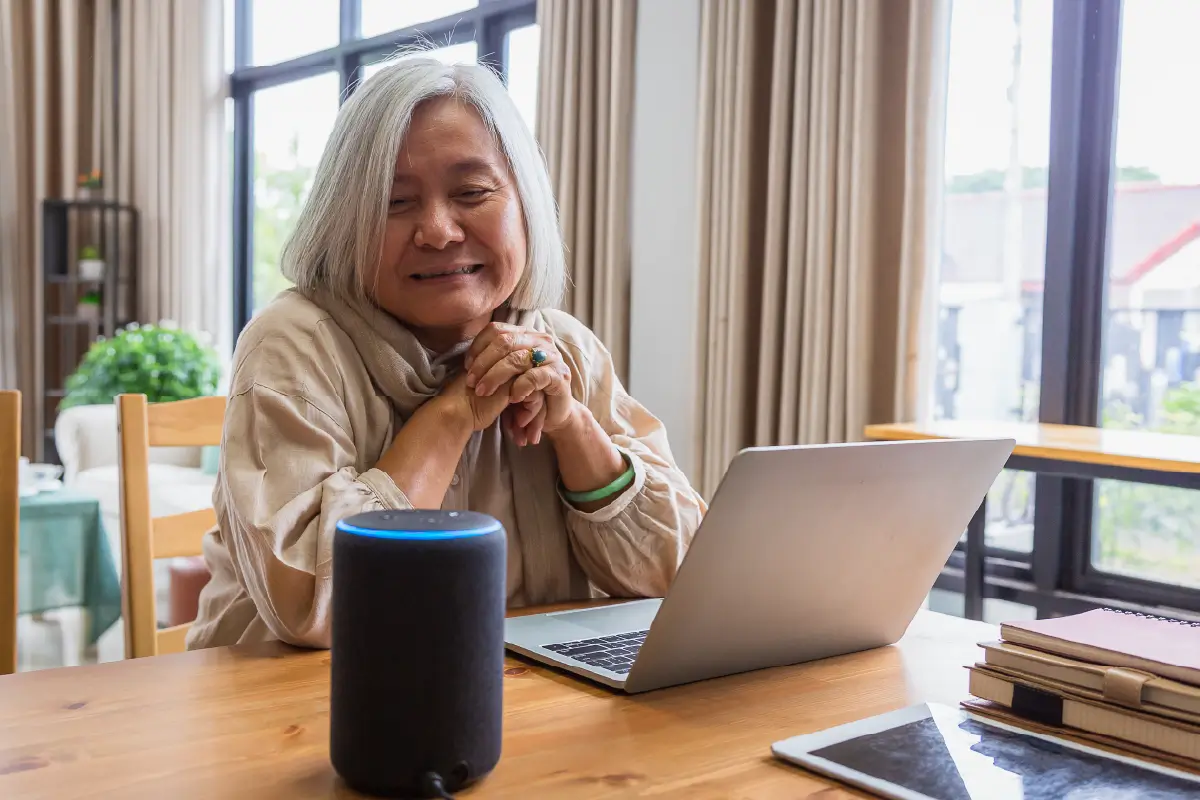
Replace incandescent bulbs with LEDs
Replace incandescent bulbs with more efficient LED bulbs. Modern LED bulbs tend to be brighter than their incandescent equivalents and last longer, ensuring they don't burn out, reducing visibility. They have come down in price over the years, making them an affordable upgrade.
Add non-slip grips to carpets
If you have area rugs around your home that you wish to keep, purchase affordable non-slip grips that can be attached to their bottoms. Non-slip grips, or anti-slip grips, help ensure your rugs don't move out from underneath someone's feet, causing a dangerous fall.
Use voice assistants and smart lights
Individuals with reduced mobility may enjoy using a voice assistant and smart lights. Modern smart lights can be added to nearly any light fixture, allowing lights to be turned on with a voice command. This pairing can prevent people with disabilities from entering a dark room to search for a switch.
Install a frame on your existing toilet
Raised-height toilets can be helpful for those with disabilities, but they can also be costly. Instead, you can install a toilet frame, a low-cost alternative that enables better maneuverability for those with mobility issues.
Install a suction cup grab bar
Grab bars are essential accessible home modifications that help prevent slips in the shower or bathtub, but they can be challenging and expensive to install. Grab a suction cup grab bar instead; it’s easy to install and doesn't require remodeling.
Move furniture around for easier mobility
Here's a free tip that won't cost you a dime: Move your furniture around your home. For people with disabilities, ensuring furniture is well-spaced to allow for easy mobility can be one of the best no-cost upgrades. Start by cutting down on narrow spaces so wheelchair and walker users can freely move about without issue.
Utilize extension cords for better plug placement
Accessing a low-mounted outlet or one placed behind furniture can be challenging for individuals with disabilities. Consider using extension cords and power strips to "move" outlets to more accessible locations.
Install high-grip shower mats
We've mentioned that bathrooms are where most accidents occur within a home, so installing a high-grip shower mat is essential. Select one with suction cups so it stays firmly attached.
Grants for Home Modifications
Many grants exist for home modifications, allowing low-income individuals and those with financial difficulties to afford accessibility modifications. Here are eight grants for home modifications to consider.
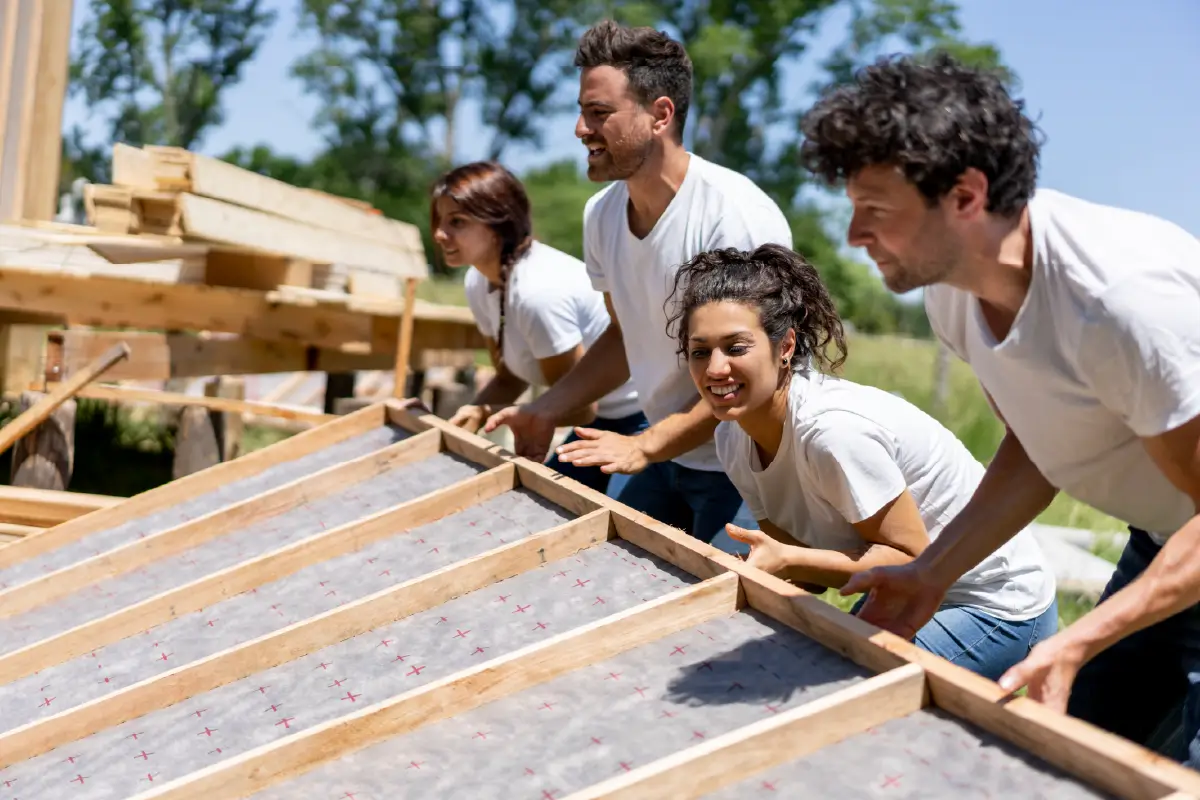
U.S. Department of Veterans Affairs
The U.S. Department of Veterans Affairs offers disability housing grants for veterans. If you own a home and have a qualifying service-connected disability, you may be able to obtain a grant via the Specially Adapted Housing or Special Home Adaptation grants.
Rebuilding Together AmeriCorps
Rebuilding Together, a program through AmeriCorps, provides home repair services nationwide for individuals with physical limitations. Local affiliates across the country work with volunteers to make homes safer—contact your local Rebuilding Together affiliate chapter for more information.
The U.S Department of Housing and Urban Development
The U.S. Department of Housing and Urban Development offers grants and other funding opportunities each year for individuals in need. Visit the official department website to learn more about how you may qualify.
The Rural Housing Repair Loans and Grants Program
The United States Department of Agriculture offers the Single Family Housing Loans & Grants program. The grant is available for homeowners who occupy their home, can't obtain affordable credit elsewhere, fall under a low-limit income, and are 62 or older.
The Benevolent and Protective Order of Elks
The Benevolent and Protective Order of Elks is a fraternal order established in 1868; it provides local services to the community, including home modifications for those in need. Explore half a dozen grant types on the Elk's Community Investments website.
The National Council of State Housing Agencies
The National Council of State Housing Agencies (NCSHA) offers homeowner assistance via a dedicated fund. Available programs vary by state and can be researched further by visiting the NCSHA funding page.
The National Resource Center on Supportive Housing and Home Modifications
The National Resource Center on Supportive Housing and Home Modifications offers a collection of aids to assist individuals looking to modify their homes. The organization also has various resources, including education and training offerings.
Modest Needs Self-Sufficiency Grant
The Modest Needs organization offers the Self-Sufficiency Grant to assist individuals who generally fall shy of typical grant assistance due to their income. The program emphasizes individuals and families living paycheck to paycheck who have experienced emergencies and those unable to pay due to extenuating financial circumstances.
Home Modification FAQ
Modifying your home for improved accessibility can be challenging, but it helps eliminate daily challenges for persons with disabilities. Here are some of the most commonly asked home modification questions and answers to help you make necessary decisions.
What are accessibility modifications?
Accessibility modifications are adaptations or changes to an environment that allow individuals with disabilities to navigate with greater ease and less risk. Home accessibility modifications can be essential to protect yourself and those you love from unnecessary hazards.
How do I make my room ADA-compliant?
Modifying a room to be ADA-compliant can be a tall task, as you may need to make many minute modifications. We recommend checking the official ADA.gov website for more information on constructing or modifying spaces for ADA compliance.
How do I make buildings more accessible for individuals with disabilities?
To make buildings more accessible for individuals with disabilities, we recommend starting with the entryway. If your entryway has stairs leading up to it, installing a ramp is a critical first step that allows individuals with limited mobility and wheelchair users greater access. Additionally, widening your doorway will make it easier to maneuver a wheelchair through it. Doorways and hallways within your home can also be widened to allow for easier maneuverability.
What items are available to help individuals with disabilities?
Many items are available to help individuals with disabilities. Some common accessibility items include standing aids, toilet safety rails, suction cup grips, non-slip mats, and door handle extensions.
Let Mr. Handyman Assist With Your Home Accessibility Modifications
When it comes time to make accessible home modifications in your house or apartment, you won’t want to go at it alone. Home improvements can be challenging and having a trained service professional from Mr. Handyman®️ can prevent costly DIY mistakes.
Mr. Handyman is a part of the Neighborly brand, with all work covered by the Neighborly Done Right Promise™️. Make your home safer and more accessible for people with disabilities while Mr. Handyman takes the stress out of home modifications and ensures they’re done right.
 Click to call
Click to call


